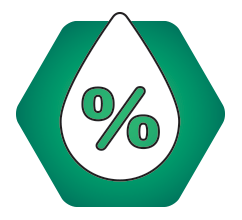November 2012 marked a milestone for Georgia farmers: it was the first time the state ever imported corn. The reason? Last summer’s severe drought sent corn prices skyrocketing.
5 Quick Tips to Maintain Paw Quality
A litany of paw problems awaits you if you have damp poultry litter. Treatment is simple thankfully, and paw quality can be maintained if you follow these five easy steps from day one.
Applicator Service Maximizes Ammonia Control, Improves Litter Management
As turkey and broiler producers continue to battle rising feed costs, the impact of ammonia and tight profit margins, the Jones-Hamilton Agricultural Division is helping them strike back with litter management education and application services.
Winter Ventilation Tips for Better Litter Management
The main role of winter ventilation strategies is moisture control. Because of that, the most important factor in monitoring air quality and ventilation success during the winter is relative humidity.
5 Quick Tips About Relative Humidity
When excessive moisture exists in broiler litter it can cause litter caking, increase paw lesions and make it difficult to retain heat, thereby lowering a bird’s body temperature which can be detrimental to weight gain, feed conversion and immune function. These five easy tips can help you maintain an ideal relative humidity for optimal performance during brooding.
The Truth About Poultry Ammonia in the Summer
Are you one of the many growers or live production personnel who believe that ammonia is simply not an issue when brooding during the summer months? Even with the increase in litter age and bird size over the last few years, many growers still think that somehow the air is fresh at ground level because the fans run so much when it’s hot outside. Field surveys tell us another story.
Feed Prices Expected with Rise with Diminishing Corn Stockpiles
With U.S. corn stockpiles at their lowest level in 16 years, Goldman Sachs analysts are predicting a 9 percent surge in corn prices over the next 6 months. What does that mean for already cash-strapped poultry growers and producers?
Bailing Technology Simplifies Transport of Poultry Litter for Fertilizer
In late 2011, the University of Arkansas cited the rising value of poultry litter as a fertilizer. Compared to commercial phosphorus-potassium-nitrogen fertilizer sources, the cost for poultry litter is a bargain, especially when you consider the fact that chicken litter analysis reveals an average concentration of 67-60-60 lbs of nitrogen, phosphorus and potassium per ton.
US Poultry & Egg Association spotlight corresponds with ideal time for growers to assess their litter management program
The Jones-Hamilton Co. is proud to be the U.S. Poultry & Egg Association February member spotlight.
Watt Poultry Reviews Importance of Updated Poultry Litter Management Practices
Watt Poultry USA editor, Gary Thornton, discusses the far reaching effects of poultry litter management with Jones Hamilton's Blake Gibson.







